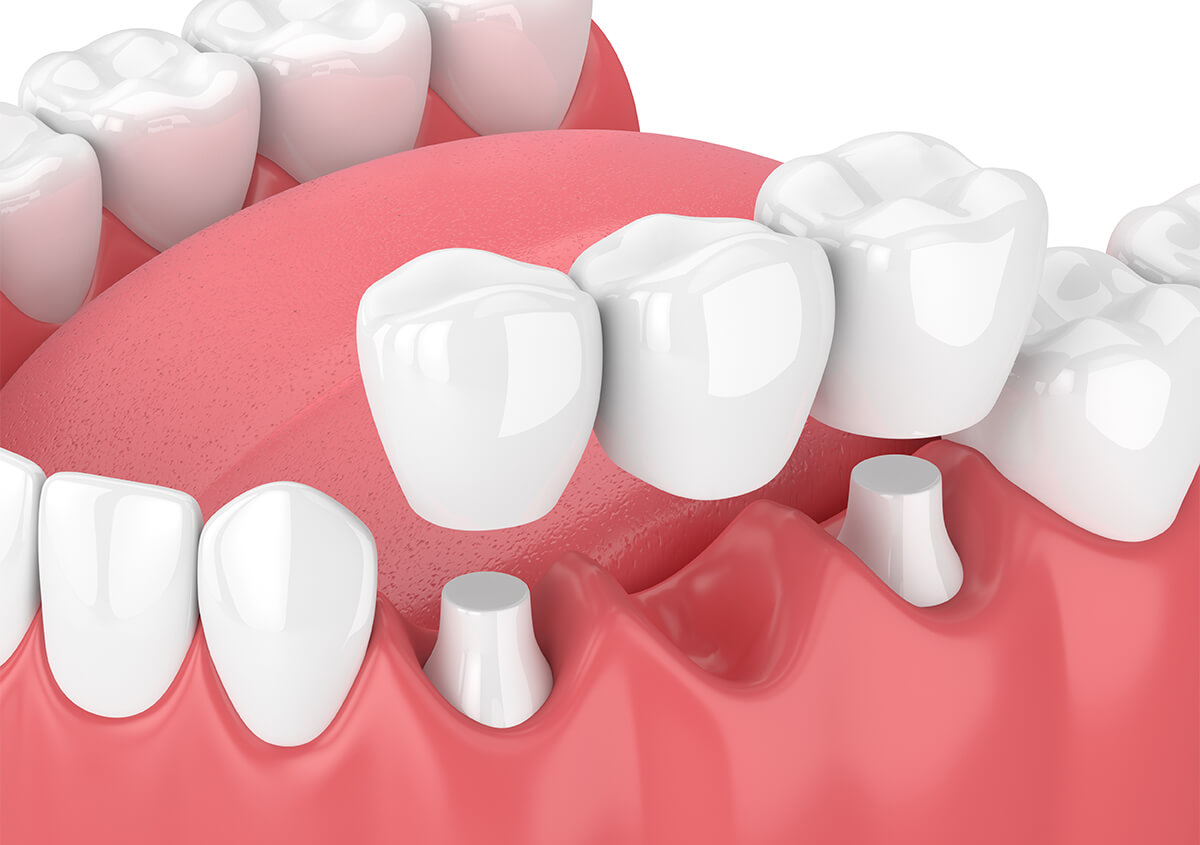Fixed bridges for better health and a confident smile
Dental bridges may be the path to a complete smile, self-confidence, and lasting oral health and wellbeing. While Dr. Sanjay Dhir and the team at Dhir Dentistry take great pride in getting to know their patients and, in turn, working with them to avoid tooth loss, we appreciate that accidents happen. Life happens. New systemic challenges can threaten your oral health, and extractions may be unavoidable. In these cases, Dr. Dhir will discuss methods to replace missing teeth, including fixed (non-removable) bridges. For those challenged by removable prostheses, such as partial dentures, we can even recommend “upgrading” these appliances to fixed bridges.
A bridge to better health
Dental bridges can be designed in a variety of different ways. However, the “standard” bridge requires that at least some natural teeth be present in the smile. Why? The natural, neighboring teeth support the replacement tooth (or teeth). These adjacent teeth function as “anchors” and are called “abutments.” These abutments must be reinforced with dental crowns to provide adequate strength to the teeth placed in between them. If you are missing a single tooth, the replacement tooth (or “pontic”) will be fabricated and connected or fused to the dental crowns that will cover the abutment teeth. The anchor teeth must be slightly reduced in size to ensure sufficient room for the crowns to fit over the natural tooth structure. Once the natural teeth have been prepared and the permanent pontic is ready to go, this bridge unit will be cemented to the abutments or anchors.
Since the pontic is fixed or held securely by the crowned, neighboring teeth, you avoid many of the hassles associated with conventional, removable dental prosthetics. These hassles include:
- Poor fit as underlying bone and tissues shrink over time.
- Higher maintenance needs, for instance, cleaning with specialized techniques and oral care products.
- Cosmetic issues due to the unnatural color of the stainless-steel framework, which may wrap around the remaining teeth to hold the denture in place
Dental bridges can generally be treated like natural teeth, with a notable exception; the space underneath the bridge can be somewhat tricky to clean. This challenge can be efficiently addressed with an interdental pick or brush or a floss threader. We are happy to show you how to use these products to properly clean your bridge and keep it free of decay-producing food debris, bacteria, and plaque. With proper care at home and professional cleanings at our practice, you can enjoy your new bridge for many years.
Call (858) 358-5801 to schedule an appointment with Dr. Dhir. During your exam, he may discuss alternate options for treatment, too, including bridges supported by dental implants placed in the jawbone.
Bridges

A bridge is a non-surgical way to replace one or many teeth. A bridge uses the adjacent teeth as anchors to support the missing tooth or teeth. With today’s dental advancements, a bridge can be fabricated in a fairly short period of time, using a metal or nonmetal foundation. Don’t let that missing tooth affect the way you speak, eat, and smile. Bridges yield immediate results that last a lifetime. Ask your dentist what type of bridge may be right for you.




